This page teaches you how to make create an exercise plan for mixed exercise.
Mixed exercise has some aerobic and some anerobic elements and includes; football, cricket, interval traning, netball, hockey and basketball to name a few.
How do you know what will happen to the glucose in mixed exercise?
- If the glucose creeps high, then the mixed exercise is mainly anaerobic.
- If the glucose drops lo,w then the mixed exercise is mainly aerobic.
- If the glucose remains steady, the mixed exercise is equally balanced with aerobic and anerobic
How does this work for me?
- I always drop low when fielding at cricket, as it’s mainly jogging between overs with the occasional sprint
- I usually creep high when batting at cricket as I am sprinting between the wicket (if I stay in long enough)
- I usually stay steady when I do a 10k interval run that’s balanced with fast and slow running
A quick recap from the exercise introduction page.
Why does glucose usually drop during the aerobic part of mixed exercise?
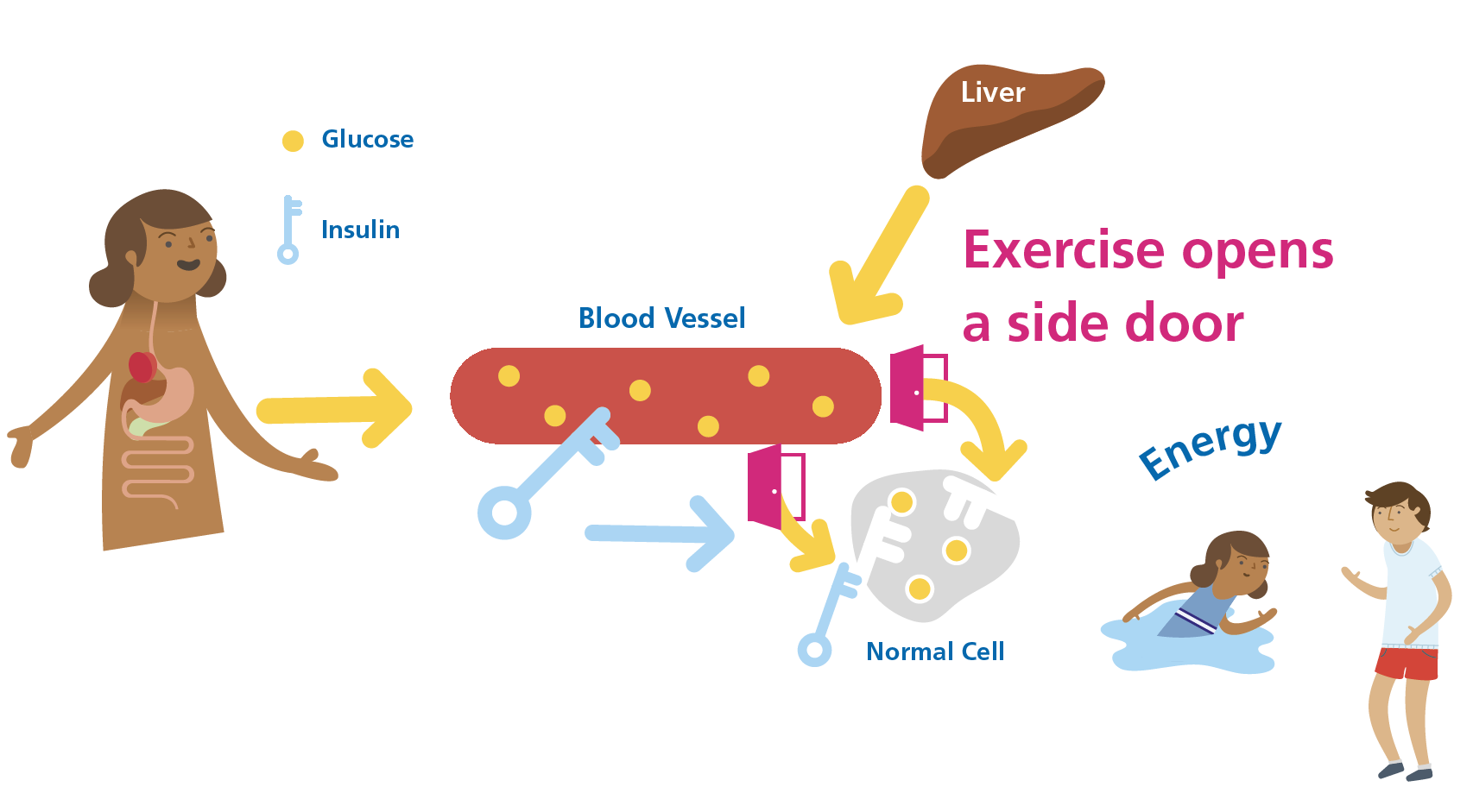
The glucose then rises during the anaerobic and very intense periods of mixed exercise.
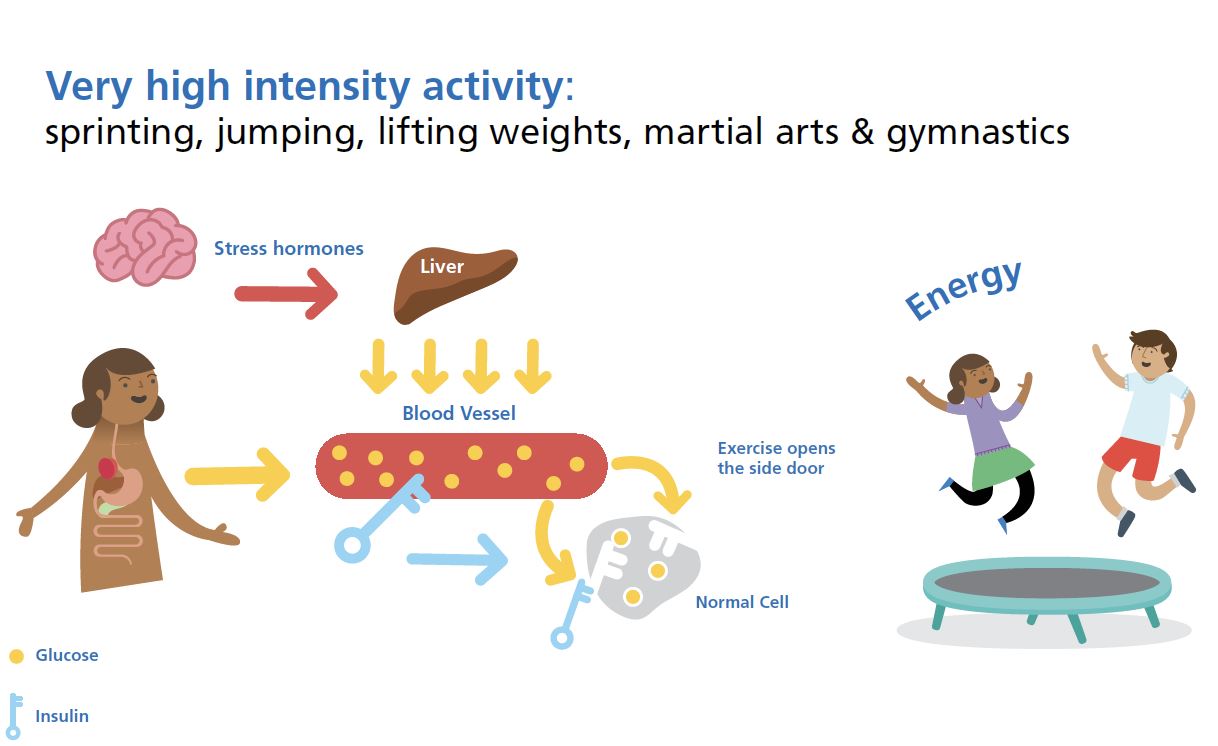
Must be mindful of before-exercise meals and bolus timing.
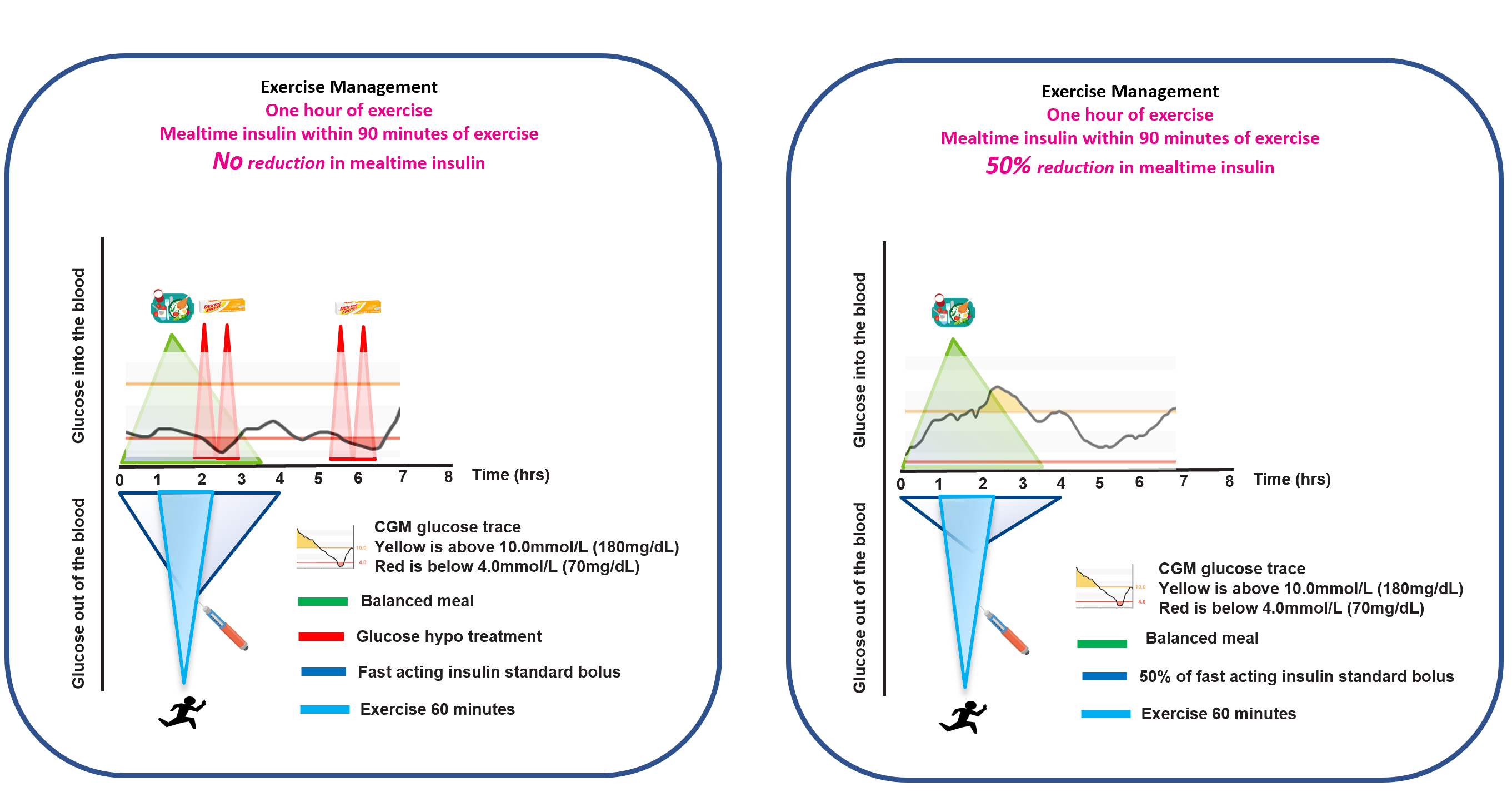
As always, if you can observe the Three-hour rule, achieving target glucose control during exercise is much simpler.
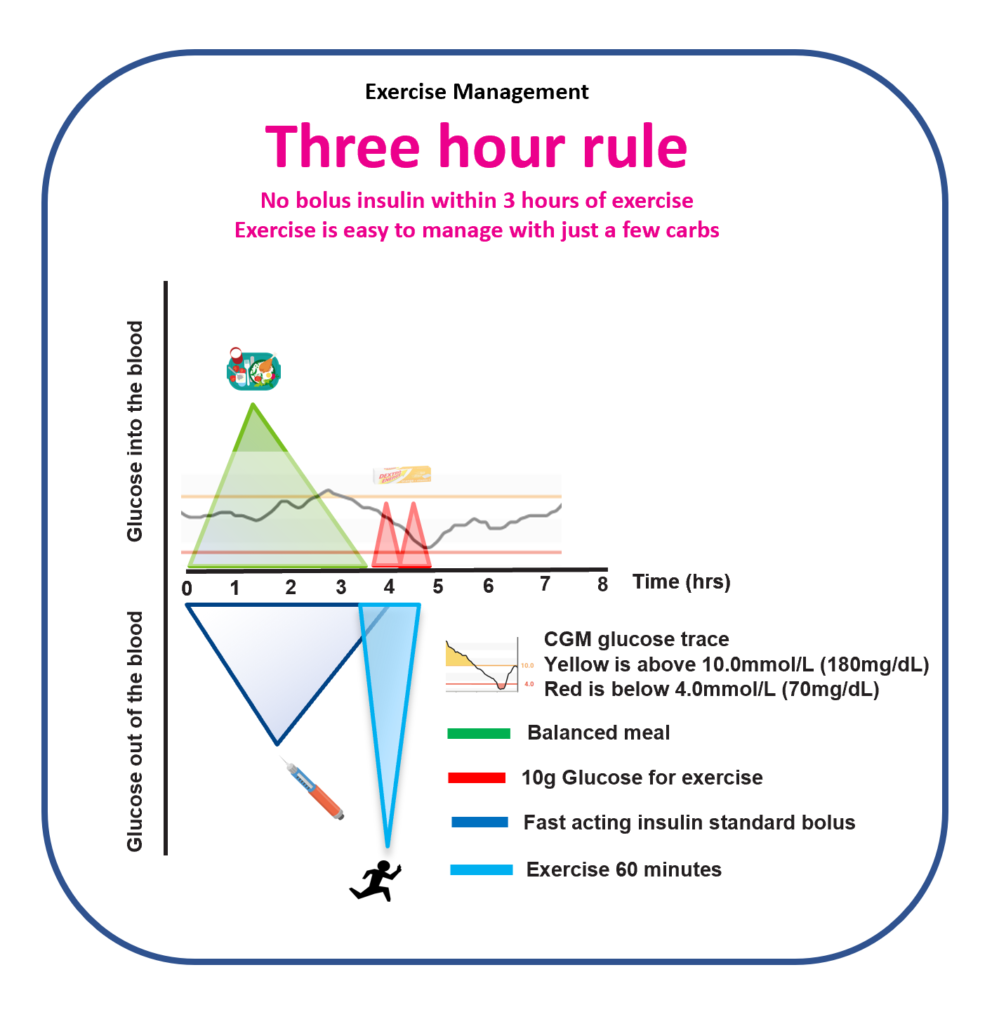
Mixed exercises burn up glucose stores that will be replaced over the next 11 hours.
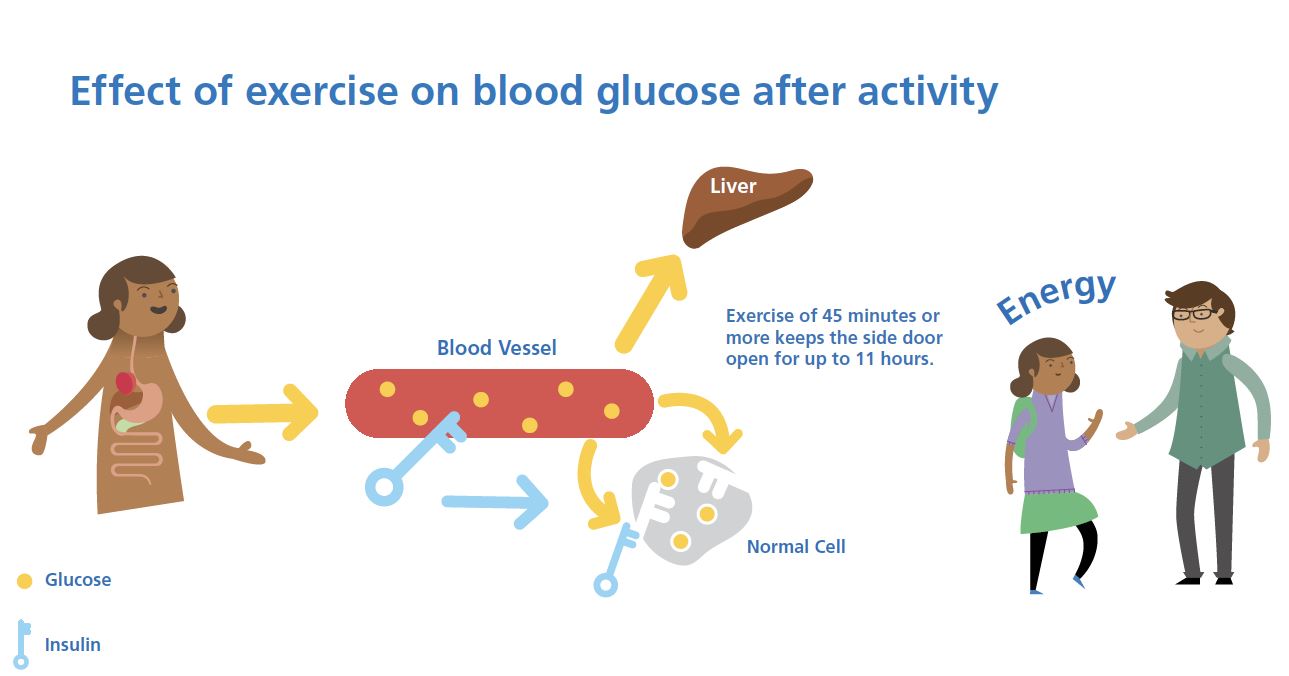
Dani, getting in target glucose control for Grace and Jude during team sports will be no picnic.
This table will give us a starting point, but a lot of trial and error with tears is certain.
Work through this table,e and I will do an example for when Jude plays football on a Sunday morning in a few years’ time. I would like to obey the three-hour rule, but even I am not obsessed enough to get him out of bed at 06:00 and eat breakfast!
Always start with the “Starting Plan” row. If the glucose goes high the first time, then use the yellow “Went high first time” row. If the glucose goes low the first time, then the red “went low first time” row is checked. Always remember that The Glucose Never Lies.
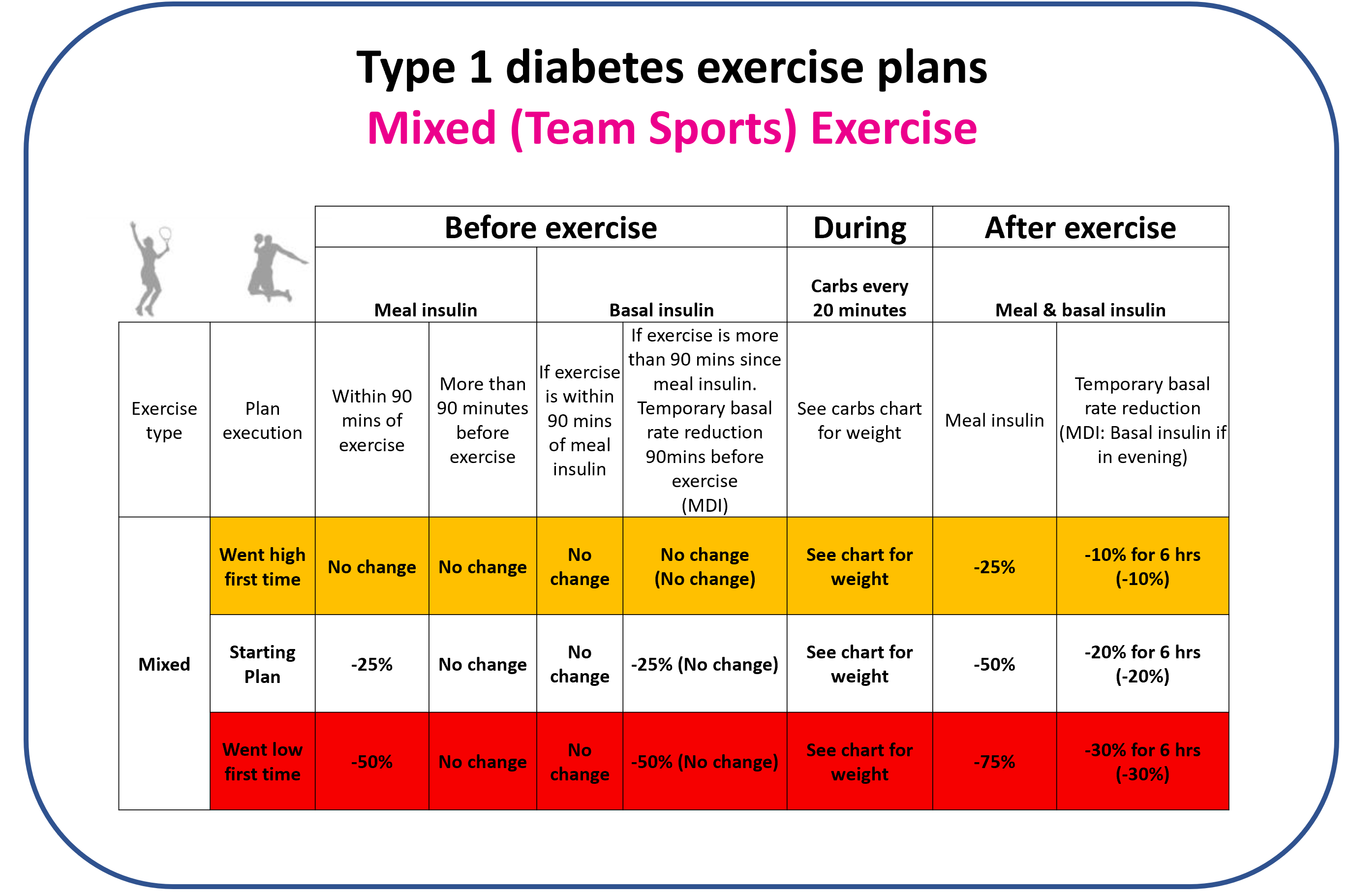
Jude is having breakfast at 08:00 on a Sunday, 40g carbs on a 1u:10 carb ratio. He plays football at 09:15 for 60 minutes, he is a great midfielder. He weighs 40kg. He is having 100g carb at lunch on a 1u:25g carb ratio. Here is the plan:
- Before exercise: 75% of the bolus of 3 units
- During exercise: Check the CGM before and every 20 minutes; at 08:40, 09:00, 09:20, 09:40 and follow the 40kg mmol/L chart
- After exercise: Reduce bolus by 50% – so 2 units and a basal reduction of -20% for 6 hours.
- Review the results:
- If Jude stated in target, continue with the white “Starting plan” row next time
- If Jude went high, follow the yellow “Went high first time” row next time
- if Jude went low, follow the red “Went low first time” row instead
Grace and Jude, I have pulled the international guidance together into a PDF. You can personalise carb amounts and glucose targets depending on the CGM you are using. Click on the device you are using and answer a few simple questions, and voila!
You will need Adobe to be able to use them, which you can get for a Computer, Android device, or Apple device.
Dexcom G6 – Exercise Carbohydrate Calculator
Libre 1 & 2 – Exercise Carbohydrate Calculator
Medtronic – Exercise Carbohydrate Calculator
Dexcom G6 with pump – Exercise Carbohydrate Calculator
Here are all the carb charts that cover from 10-60+kg and both mmol/L and mg/dL -just in case you cannot use pdfs!
Carbohydrate charts for 20 minutes of exercise with a mmol/L CGM device
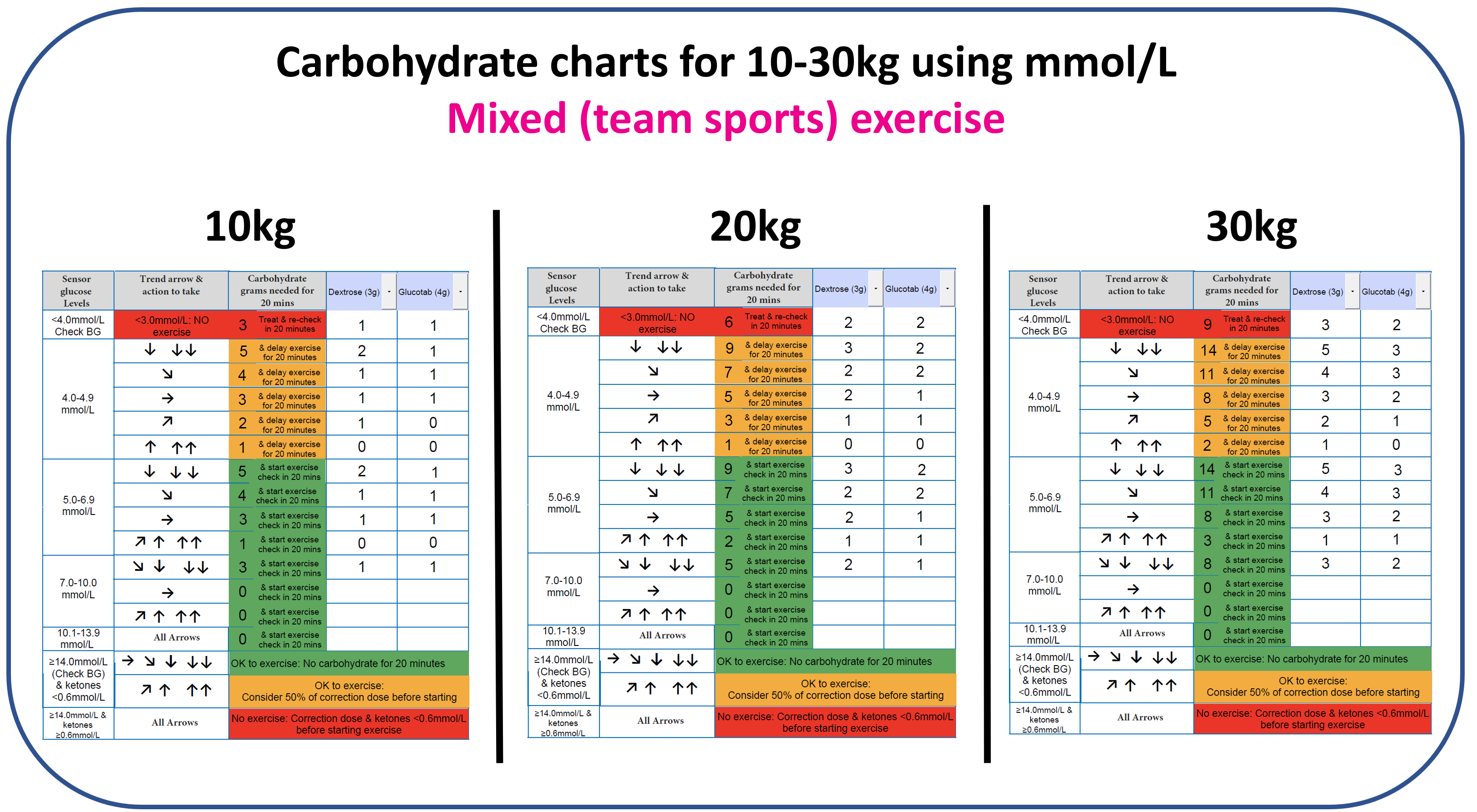
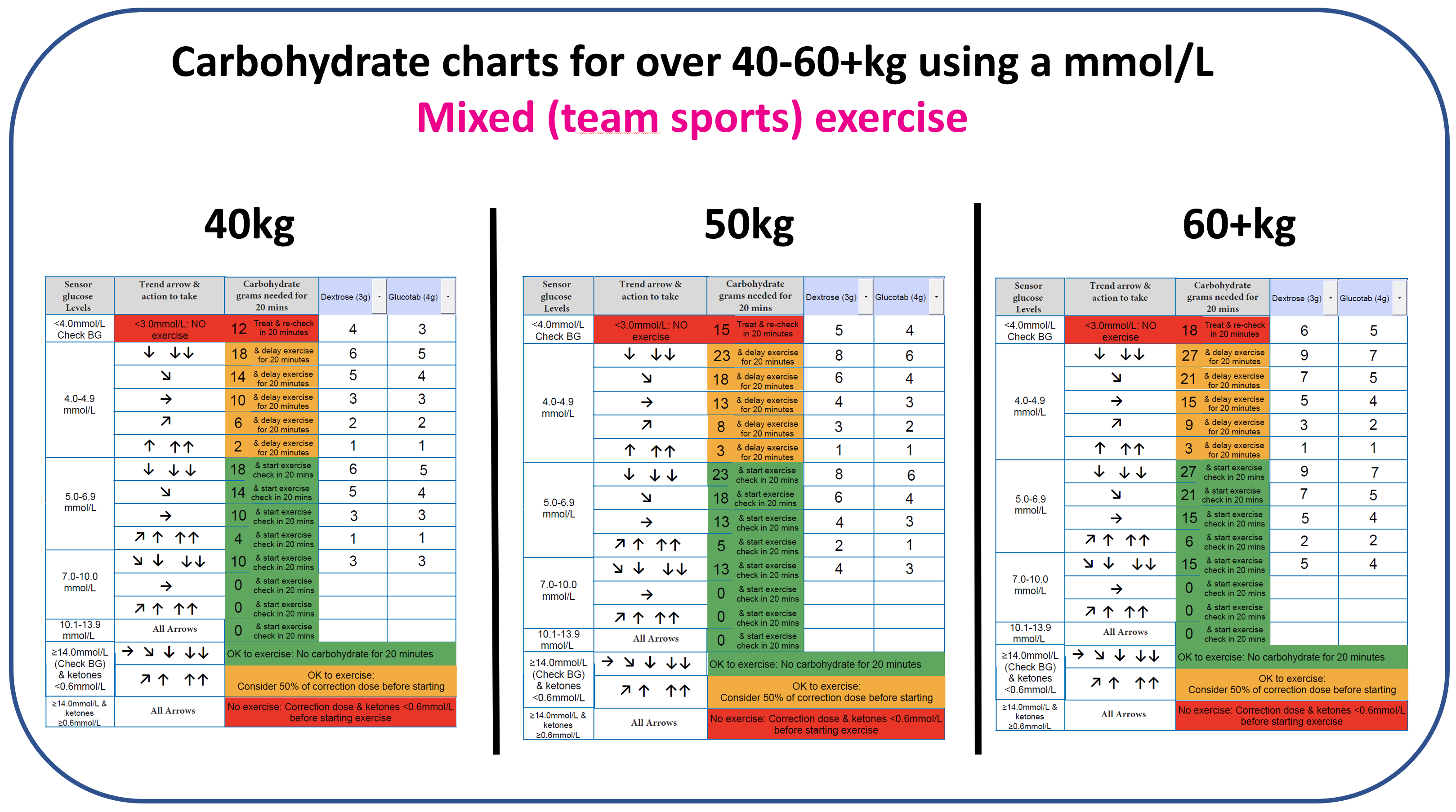
Carbohydrate charts for 20 minutes of exercise with a mg/dL CGM device
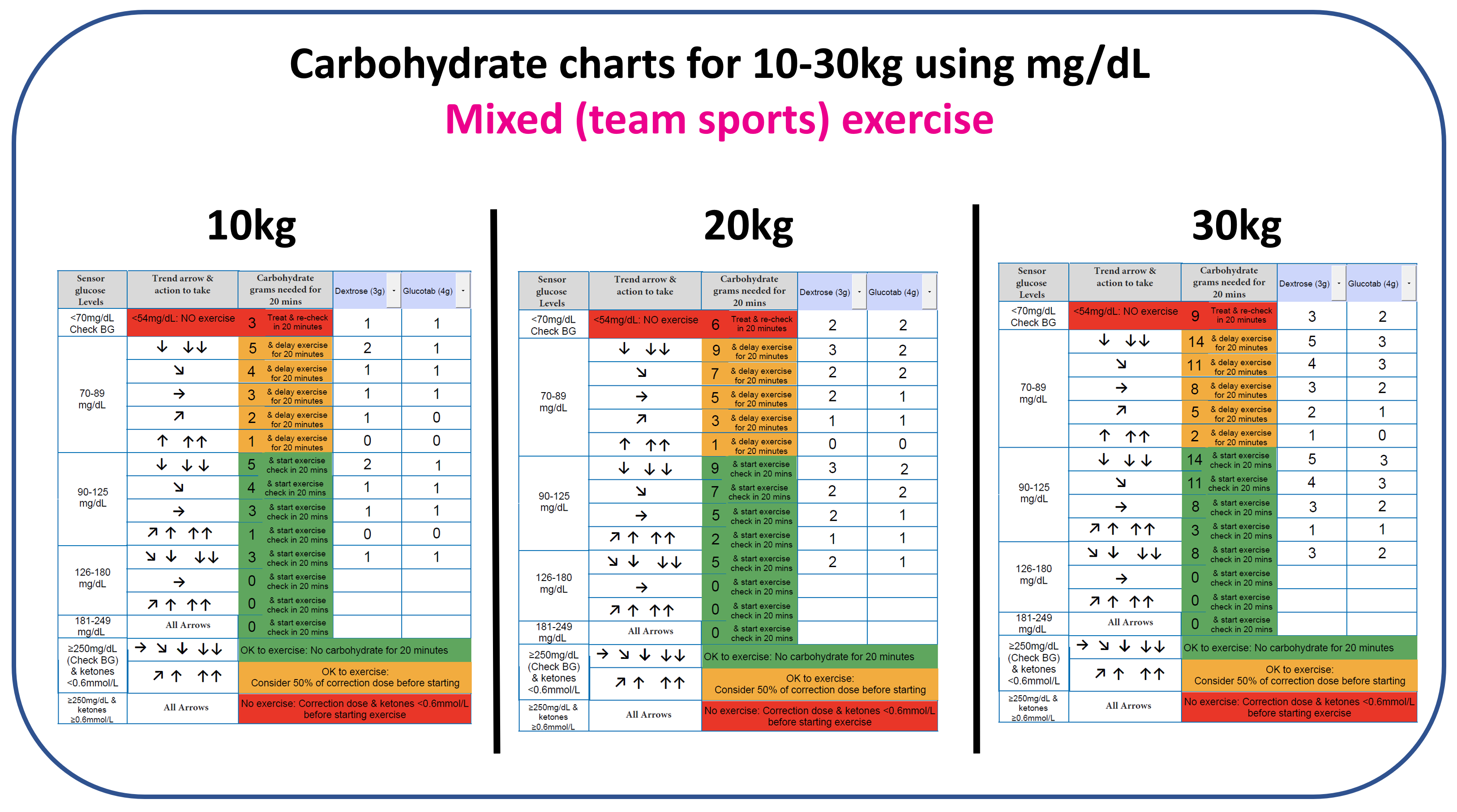
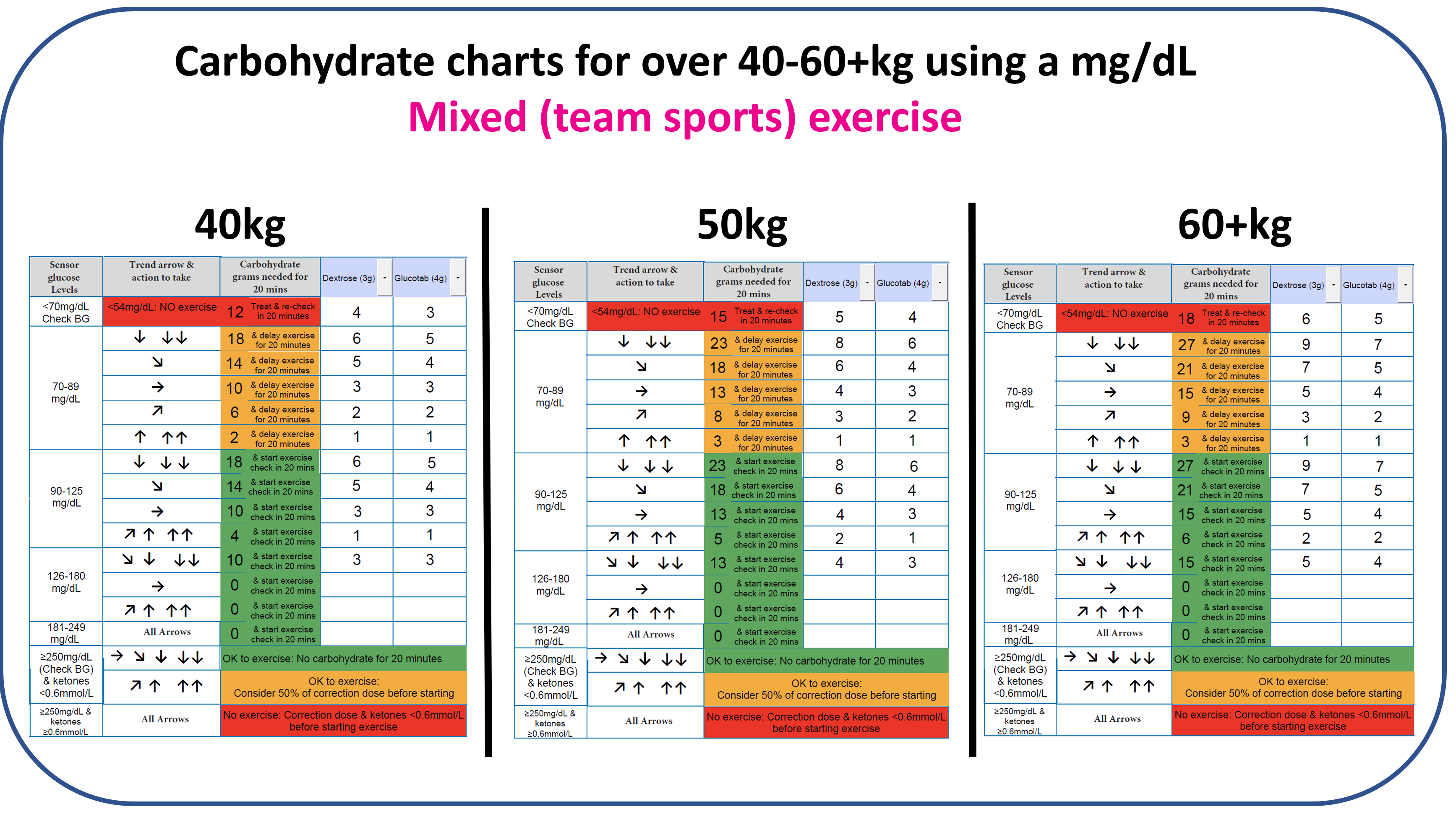
Next step. Exercise Carbohydrate Calculators
